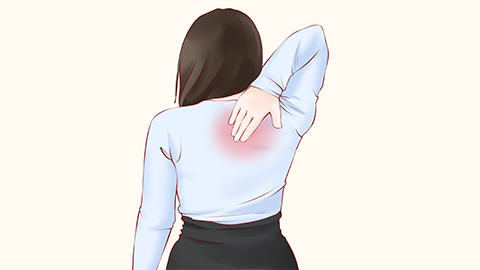What are the symptoms of cervical spondylosis?
In general, cervical spondylosis is not a single disease, but rather a group of syndromes caused by degeneration of the cervical intervertebral discs, bone spurs, or thickened ligaments that irritate or compress adjacent nerves, blood vessels, or the spinal cord. Common symptoms include neck and shoulder pain with stiffness, radiating arm pain, dizziness and blurred vision, lower limb weakness, and sympathetic nervous system symptoms. A detailed analysis is as follows:

1. Neck and shoulder pain with stiffness: Caused by degeneration of cervical intervertebral discs or cervical osteophytes stimulating or compressing muscles and fascia in the neck and shoulder region. The pain is typically dull, aching, or sore, worsening upon waking or after prolonged periods of head-down posture. A "clicking" sound may be heard during neck movement, and stiffness limits neck flexion, extension, and rotation.
2. Radiating arm pain: Most commonly seen in radiculopathy-type cervical spondylosis, where herniated discs or uncovertebral joint hyperplasia compress cervical nerve roots. Pain radiates from the arm down to the fingers, often accompanied by numbness and reduced sensation. Pain may intensify with coughing or sneezing due to increased intra-abdominal pressure.
3. Dizziness and blurred vision: Typically associated with vertebral artery-type cervical spondylosis, in which cervical osteophytes or cervical instability compress the vertebral arteries, leading to insufficient cerebral blood supply. Dizziness is often positional, triggered by sudden head turns, and may be accompanied by vertigo, nausea, and, in severe cases, transient loss of consciousness. Some patients experience blurred vision or temporary visual blackouts due to reduced blood flow, which usually improves with rest.
4. Lower limb weakness: A characteristic symptom of myelopathy-type cervical spondylosis, resulting from spinal cord compression due to disc herniation or ossification of the posterior longitudinal ligament. Patients may feel heaviness in the legs, walk unsteadily as if stepping on cotton, and have difficulty controlling gait. In severe cases, muscle atrophy of the lower limbs may develop, and even urinary or fecal incontinence can occur.
5. Sympathetic nervous system symptoms: Caused by sympathetic-type cervical spondylosis, where cervical lesions irritate the sympathetic nerve chain. Symptoms are diverse and may include facial flushing, abnormal sweating, palpitations, tinnitus, and insomnia. Some patients may also experience blood pressure fluctuations, leading to misdiagnosis as neurosis. Differentiation requires cervical imaging studies.
If neurological symptoms such as arm numbness or lower limb instability occur, prompt medical evaluation with cervical MRI or CT is necessary to determine the specific type and prevent delayed treatment that could lead to worsening of the condition.







